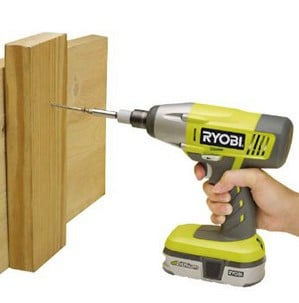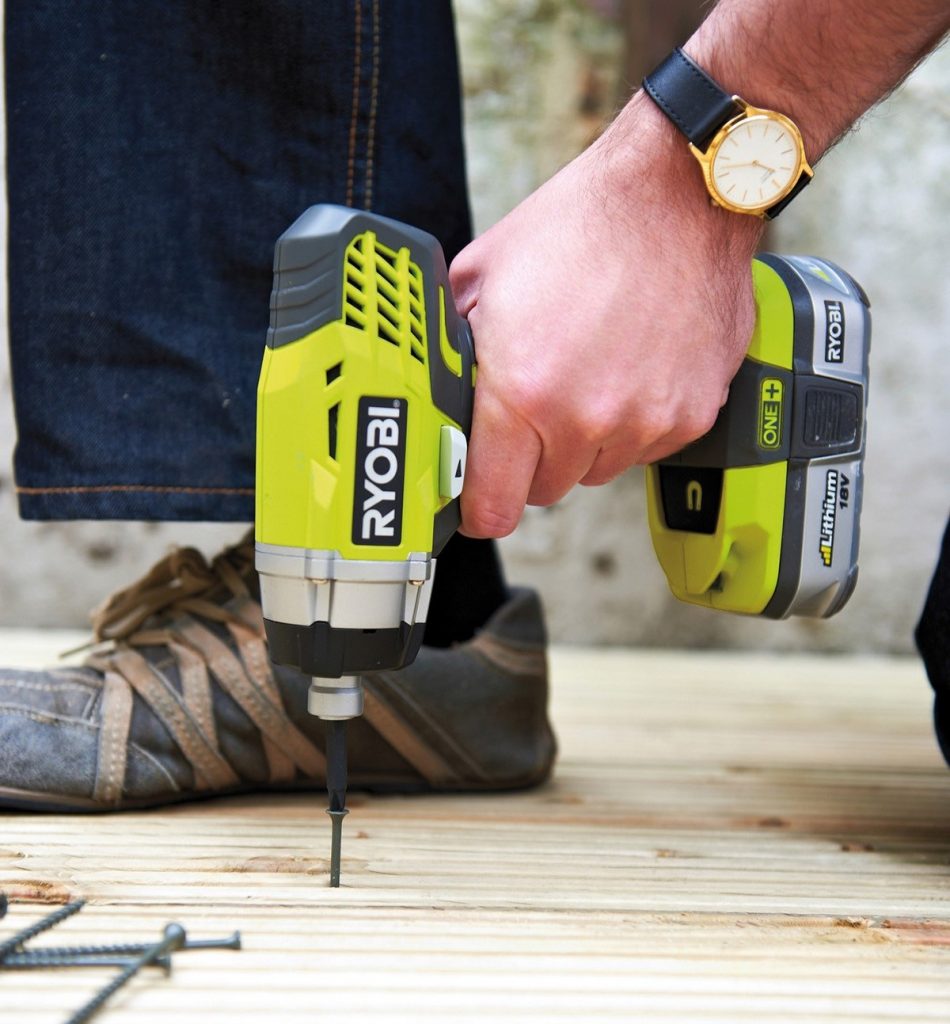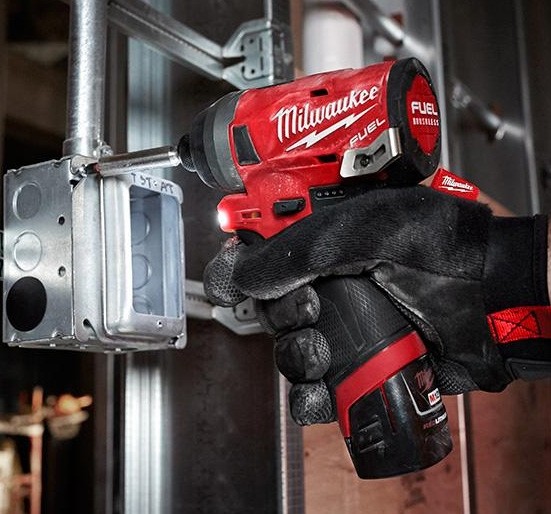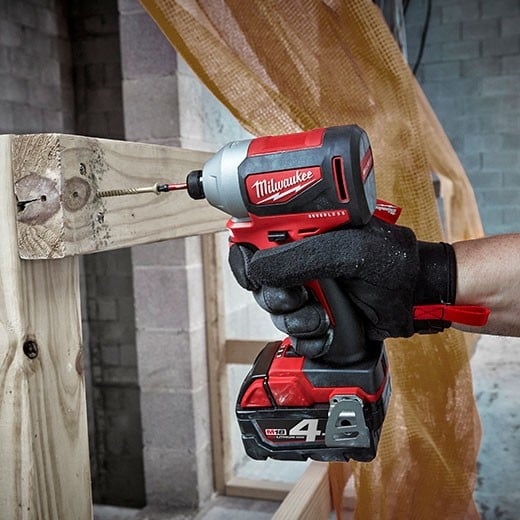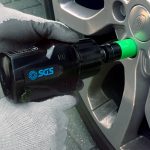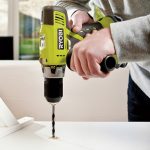Impact drivers are a lot closer to traditional drills but with a much higher rotational torque than impact wrenches. While many different bits can be attached to impact drivers which are appropriate for smaller applications. They use a fast paced rotational tapping that nudges the fastener along while keeping the screw tip in place and not spinning out of the slots. When working manually to unscrew a bolt it can take time and a lot of effort, giving the bolt one bump at a time. Impact drivers deliver close to 50 bumps per second to get screws out effortlessly.
So what’s the difference between the different styles of impact drivers and which is the right one for you? This chart gives a quick break down of all the tools you'll see in this piece;
| Brand | Name | Use | Max torque | Max Speed |
| R18IDP-0 | DIY | 170 Nm | 3200 rpm | |
| RID1801M | DIY | 220 Nm | 3200 rpm | |
| M18FID2-0 | Professional | 226 NM | 3600 rpm | |
| M18ONEID2-0 | Professional | 117 Nm | 3600 rpm | |
| M12FID-0 | Professional | 147 Nm | 3300 rpm | |
| M18BLID2-X | Professional | 170 Nm | 3400 rpm |
What are Impact Drivers For?
Impact drivers are used a lot for woodwork as it is the ultimate fastening tool. Whether you’re constructing a brand new set of drawers or installing a cabinet in your home, it will drive in bolts and screws incredibly efficiently. The extra power relieves the stress from your arm and wrist and is less likely to strip screws.
Cordless impact drivers are designed for the quick insertion and removal of screws as well as drilling holes. Due to the much higher level of torque they produce compared with cordless drill drivers and combi drills, they are particularly suited to; driving large screws, repetitive driving and working on tougher materials. They can also be used for loosening and unscrewing tough screws that have become thoroughly wedged in old bits of furniture and other items. The number of different bits will allow you to tackle bolts of different sizes and ages, even those which are well worn down, for removal.
Not to be confused with an impact wrench, which can accommodate 1/2-inch sockets of various sizes, including those that can fit a wheel lug. Read our Impact Wrench Buying Guide Here.
Which Impact Driver Do I Buy?
The majority of impact drivers are usually cordless and these are the best options for working on outside decking and other tasks away from a power source. An impact driver has a completely bespoke motor designed with the sole purpose of generating the most amount of torque (driving power) possible in the smallest space hence the compact design. Ask yourself will you be drilling into concrete or just wood? Will you need to drive small screws into soft woods, or large construction screws into hard woods? What’s the best type of drill or driver for the job? Depending on the questions you've answered here will determine the impact driver best for you and your power needs.
Home/DIY Use
Ryobi ONE+ R18IDP-0 18V 170Nm Impact Driver
- Voltage - 18V
- Impact rate - 3,400 ipm
- Max. torque - 170 Nm
- Quick load 1/4" (6.35mm) chuck
- 3 Year Warranty
- Product Weight - 2kg
- 3 power levels
Ryobi ONE+ RID1801M 18V, 220Nm Impact Driver
- Product Weight 1.5kg
- Voltage 18V
- Max Torque 220Nm
- 3200 no-load speed
- lithium-ion technology
With the 18V cordless impact driver from the Ryobi ONE+ range you can deliver up to 220Nm of torque with an impact mechanism specifically designed for tricky longer screws and lag bolts. With a 3200rpm no-load speed the Ryobi impact driver is powerful enough for any keen DIYers toolbox. Stay in control with the variable speed settings, reverse gear and safety brake. Ryobi tools are built to last, and this impact wrench is no exception designed with die-cast front gear housing for exceptional durability.
Professional Use
Milwaukee M18FID2-0 18V Generation 3 Fuel Impact Driver
- Voltage: 18V
- IPM: 0-4,300
- RPM: 0-3,600
- Torque: 226Nm
- Chuck Type: 1/4" Hex
Milwaukee M18ONEID2-0 18V GEN3 FUEL Impact Driver
- Voltage: 18V
- IPM: 0-4,300
- RPM: 0-3,600
- Drive Control: 4-Mode Customisable
- Length: 117mm
- Peak Torque: 226Nm
- Chuck Type: 1/4" Hex
The New Milwaukee 1/4" Hex Impact Driver belongs to Generation 3 tools range and is compatible ONE-KEY system. Features a POWERSTATE™ Brushless Motor, which delivers 0-3,600 RPM and 226Nm of fastening torque with constant power output under heavy load to drive screws faster. REDLINK PLUS™ Intelligence is the most advanced electronic system on the market, preventing damage to the tool and battery caused by overloading or overheating.
Milwaukee M12FID-0 M12 12v 1/4 147Nm Fuel Impact Driver
- Chuck Size: 1/4 In
- Chuck Type: Keyless
- Maximum Speed (rpm): 3300
- Torque Nm: 147
- Length: 130mm
- Impact Rate: 0-4000
Milwaukee M18BLID2-X 18V 180Nm 1/4" Hex Impact Driver with FREE Case
- Battery type : Li-ion
- Impact rate : 0 - 4,200 ipm
- Max. bolt diameter : M14
- Max. torque : 170 Nm
- No load speed : 0 - 3,400 rpm
- Voltage : 18 volt
Still need help?
Our in house experts are always on hand for buying advice and to provide bespoke care, regardless of the application.
Call SGS on 01332 576 850 or fill out our contact form today.



